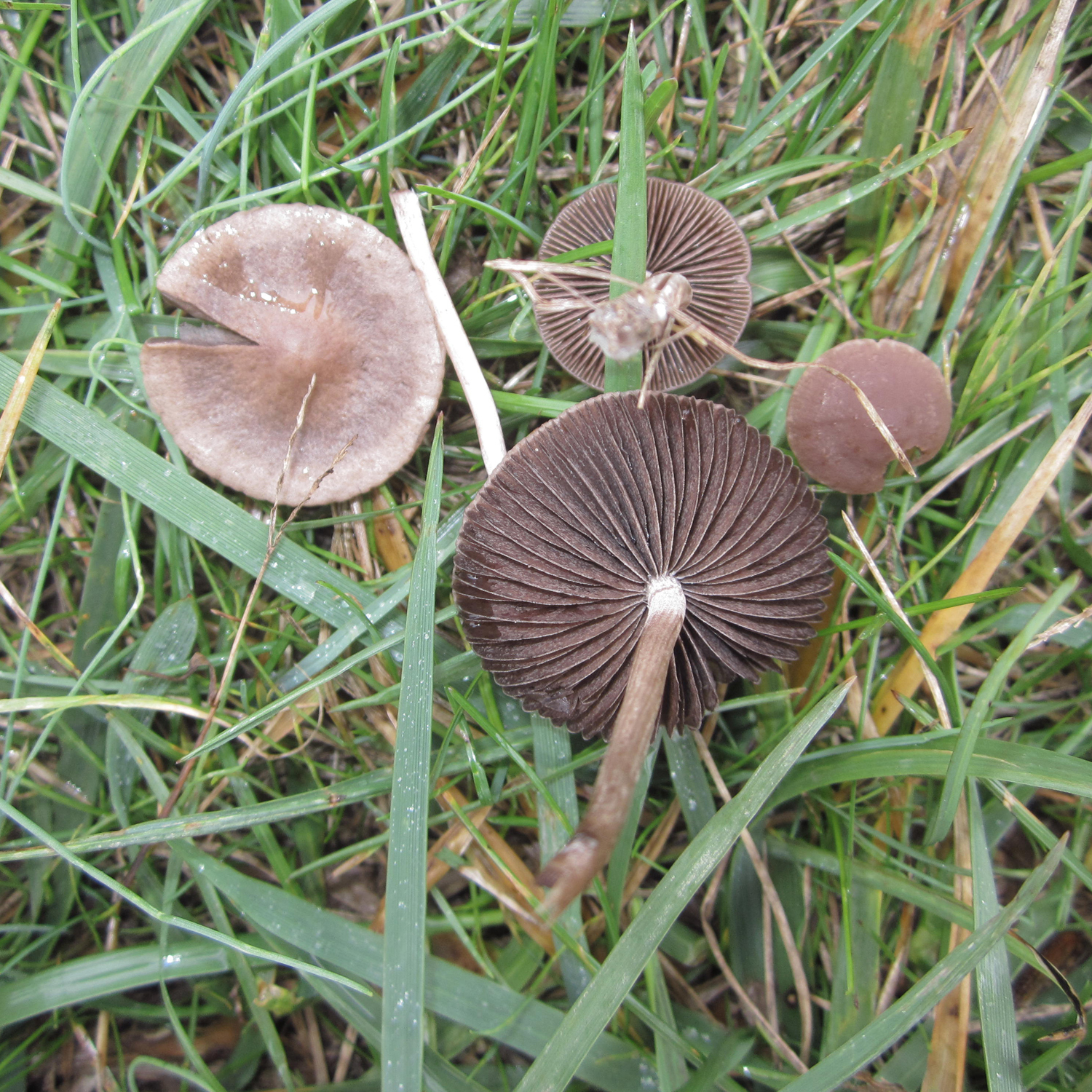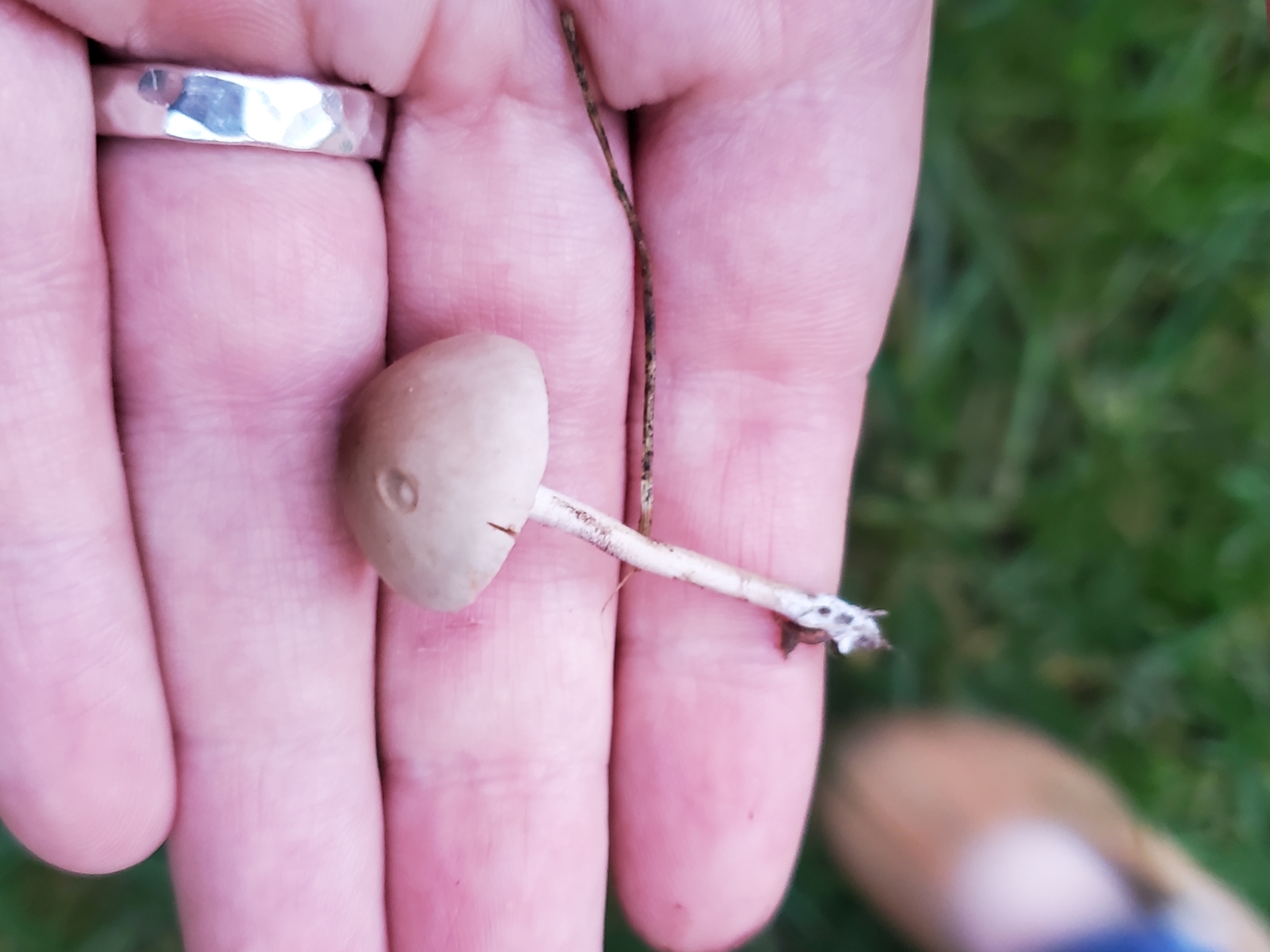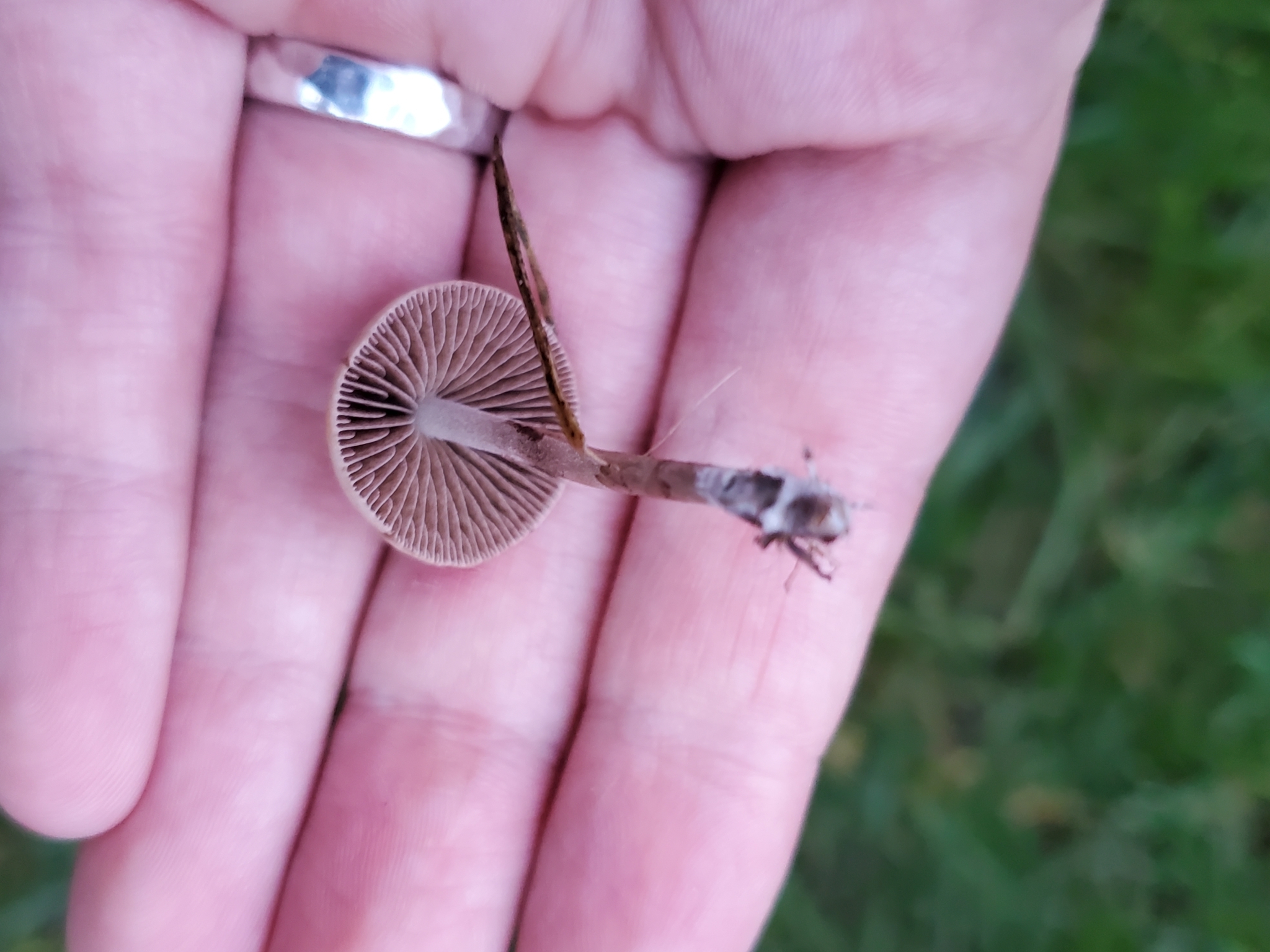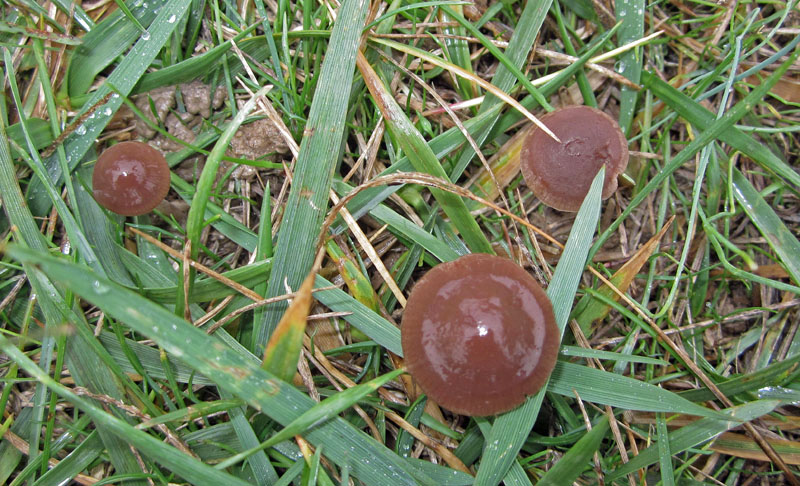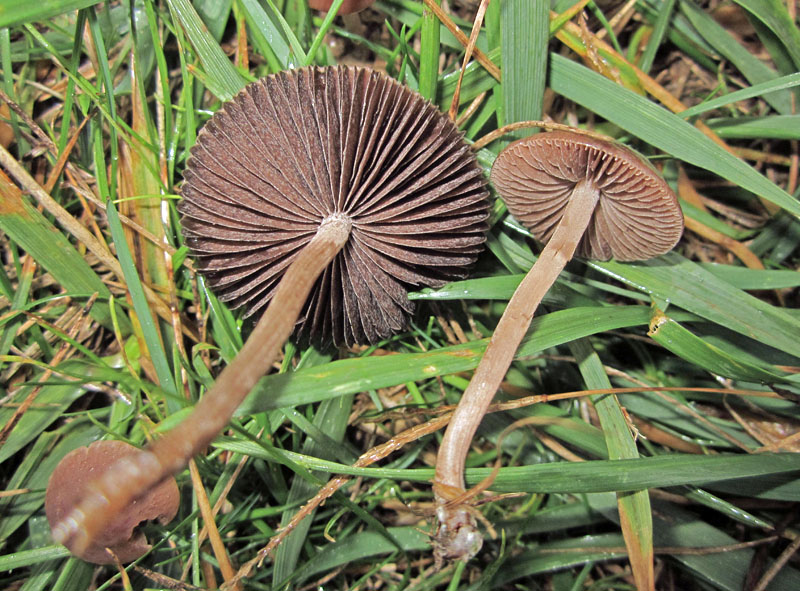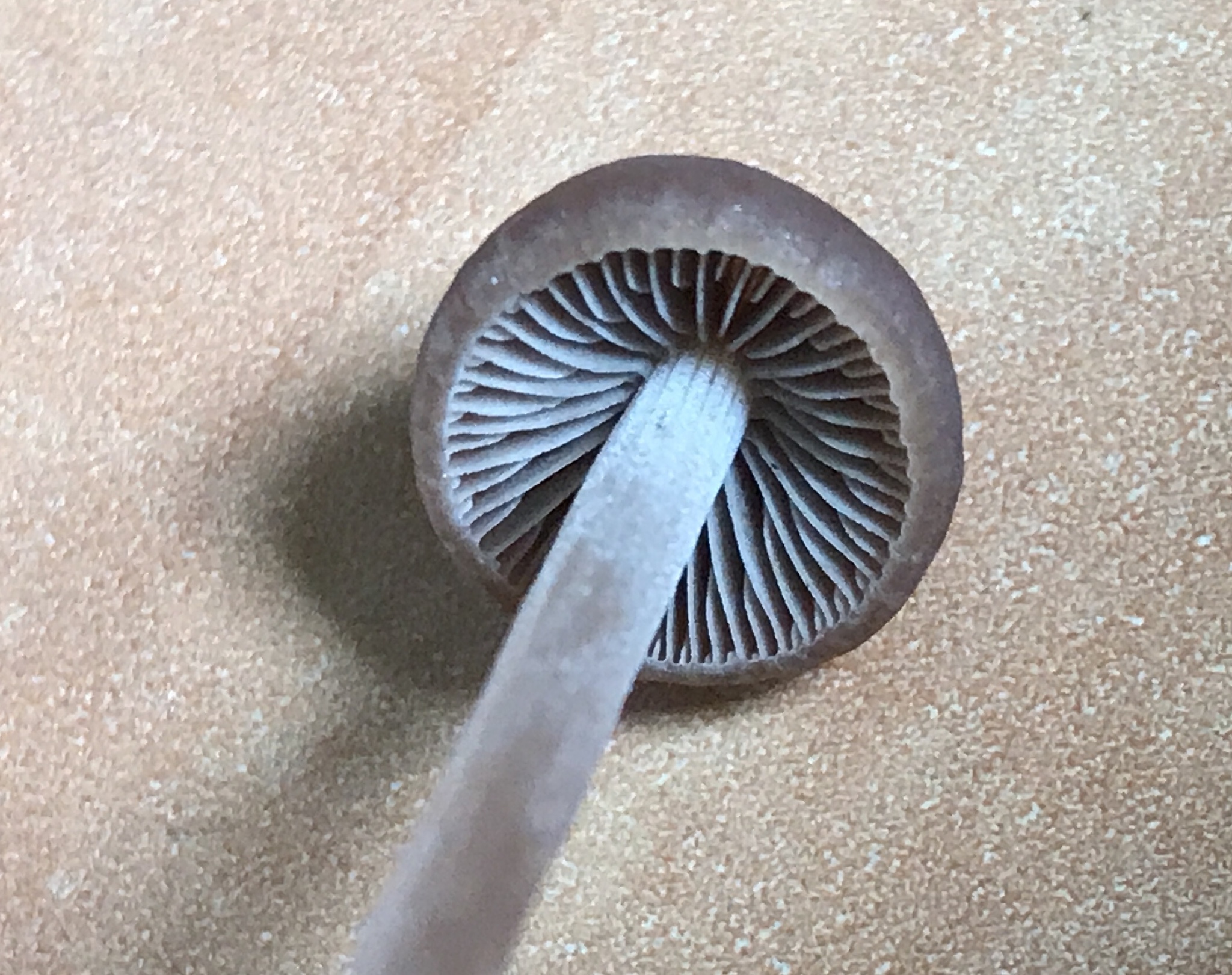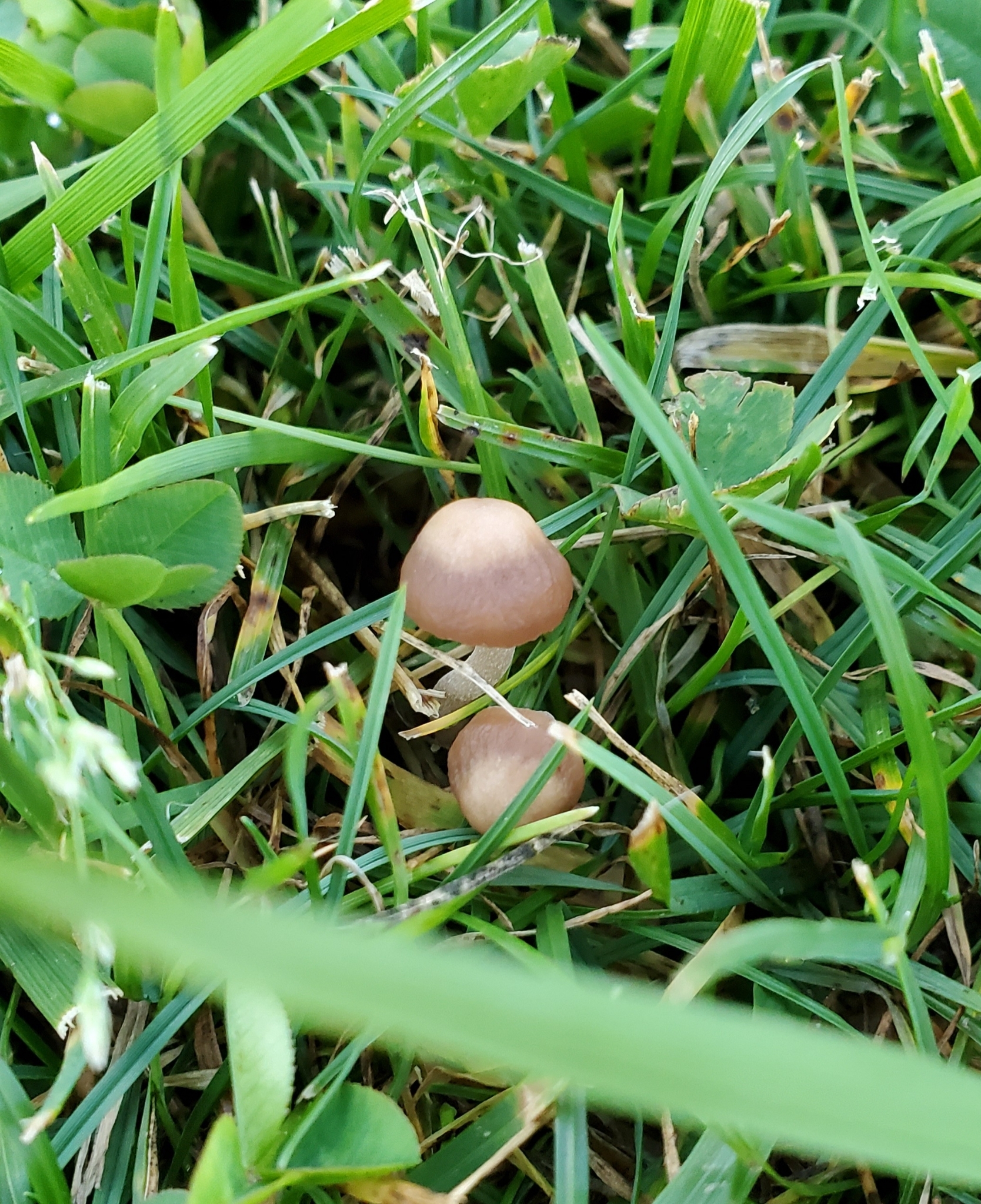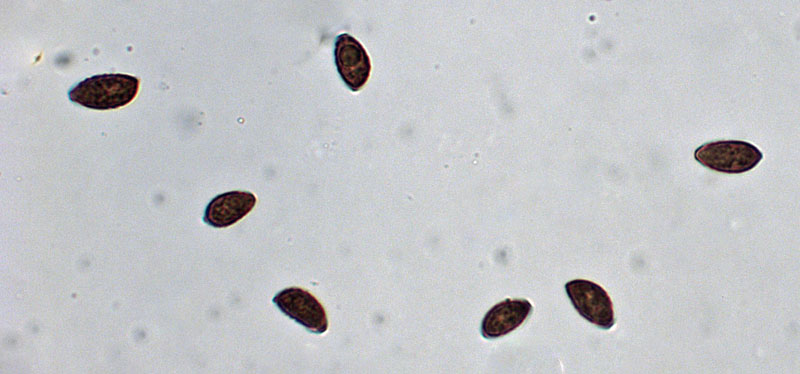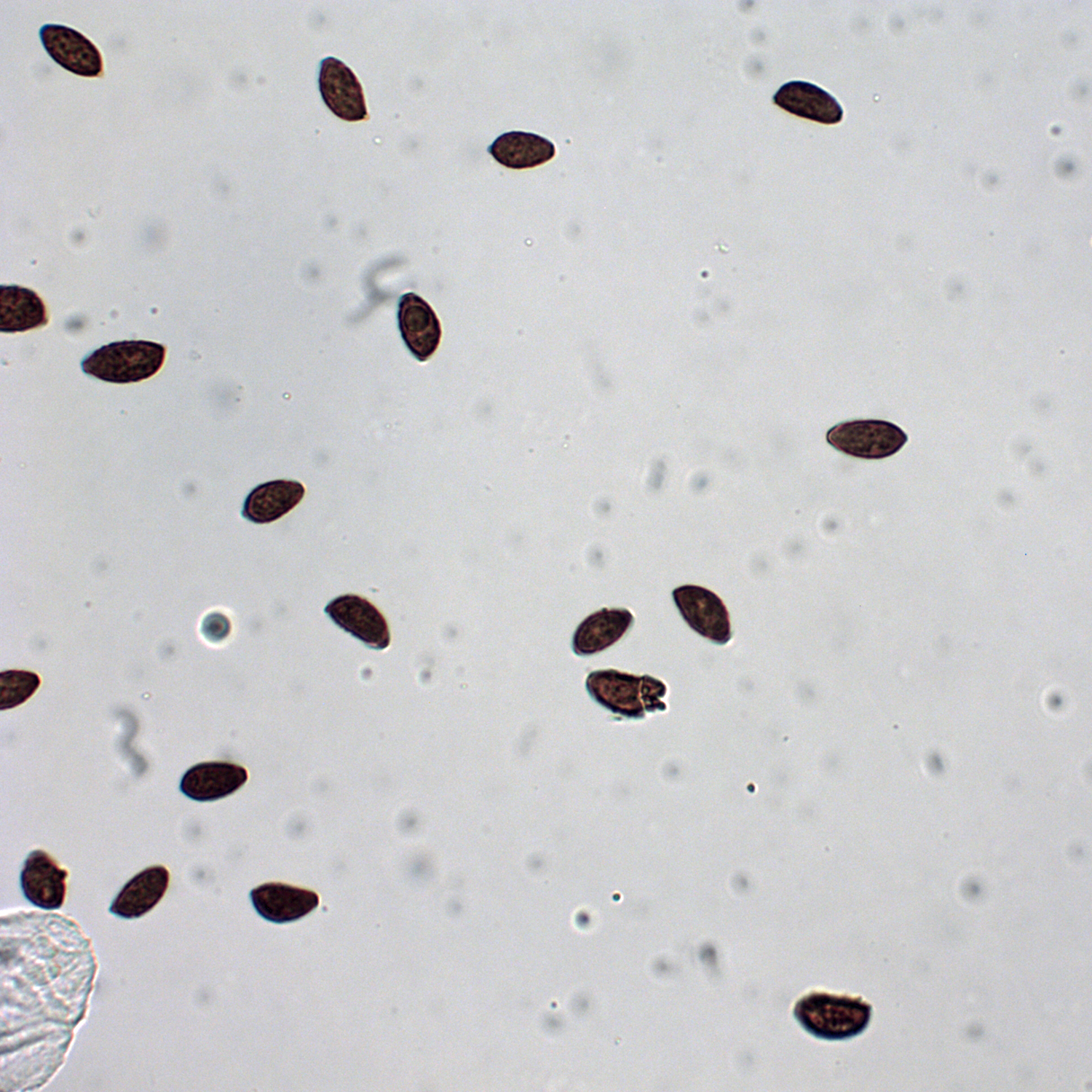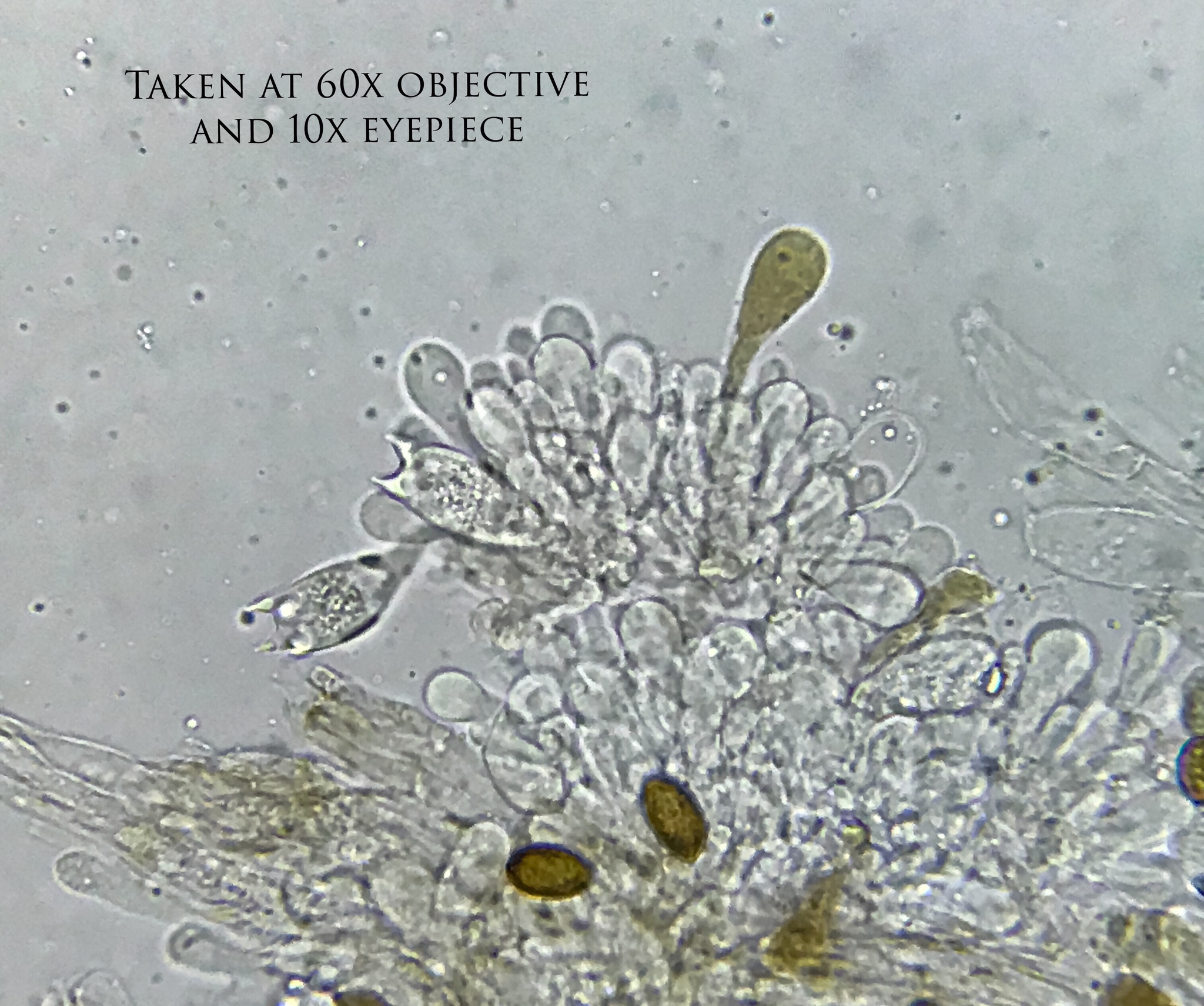Map Snapshot











32 Records
Description
Cap: Reddish-brown to grayish-tan (develops bands as dries); bell-shaped to broadly convex; moist when fresh, usually dry, margin may be slightly grooved; flesh tan, thin. Gills: Light brown to dark purple-brown; close. Stalk: White to pinkish-brown, smooth, hollow, splits lengthwise, may have small hairy bulb at base. (J. Solem, pers. comm.)
Seasonality Snapshot
Source: Wikipedia
| Panaeolus foenisecii | |
|---|---|

| |
| Scientific classification | |
| Domain: | Eukaryota |
| Kingdom: | Fungi |
| Division: | Basidiomycota |
| Class: | Agaricomycetes |
| Order: | Agaricales |
| Family: | Bolbitiaceae |
| Genus: | Panaeolus |
| Species: | P. foenisecii
|
| Binomial name | |
| Panaeolus foenisecii | |
| Synonyms[1] | |
|
Agaricus foenisecii Pers. (1800) | |
| Panaeolus foenisecii | |
|---|---|
| Gills on hymenium | |
| Cap is convex | |
| Hymenium is adnexed | |
| Stipe is bare | |
| Spore print is blackish-brown | |
| Ecology is saprotrophic | |
| Edibility is inedible | |
Panaeolus foenisecii, commonly called the mower's mushroom, haymaker, haymaker's panaeolus,[2] or brown hay mushroom, is a very common and widely distributed little brown mushroom often found on lawns and is not an edible mushroom. In 1963 Tyler and Smith found that this mushroom contains serotonin, 5-HTP and 5-hydroxyindoleacetic acid.[3] In many field guides it is listed as psychoactive; however, the mushroom does not produce any hallucinogenic effects. [4]
Description
[edit]- Cap: 1 to 3 cm across, conic to convex, chestnut brown to tan, hygrophanous, often with a dark band around the margin which fades as the mushroom dries.[5]
- Gills: Broad, adnate, brown with lighter edges, becoming mottled as the spores mature.[5]
- Stipe: 3 to 8 cm by 1 to 3 mm, fragile, hollow, beige to light brown,[5] fibrous,[6] pruinose, and slightly striate.
- Taste: A slightly unpleasant nutty fungal taste.
- Odor: Nutty, slightly unpleasant.
- Spore print: Dark walnut brown.
- Microscopic features: Spores measure 12–17 x 7–11 μm, subfusoid to lemon shaped, rough, dextrinoid, with an apical germ pore. Cheilocystidia subfusoid to cylindric or subcapitate, often wavy, up to 50 μm long. Pleurocystidia absent, but some authors report inconspicuous "pseudocystidia". The pileipellis a cellular cuticle with subglobose elements and has pileocystidia.[7]
Habitat
[edit]In the Pacific Northwest of the United States, the species may be the most common to appear in lawns.[6] It is also found on lawns along the east coast.
Gallery
[edit]The following two images are of Panaeolus foenisecii in the wild with two magnifications of the spore print.
-
Wild Panaeolus foenisecii showing banded cap
-
stipe and gills
-
Panaeolus foenisecii spores magnified
-
Panaeolus foenisecii spores
Similar species
[edit]Similar species include Agaricus campestris, Conocybe apala, Marasmius oreades, Psathyrella candolleana, and Psathyrella gracilis.[5]
It is sometimes mistaken for the psychedelic Panaeolus cinctulus or Panaeolus olivaceus, both of which share the same habitat and can be differentiated by their jet black spores. This is probably why Panaeolus foenisecii is occasionally listed as a psychoactive species in older literature.[original research?]
See also
[edit]References
[edit]- ^ "Panaeolus foenisecii (Pers.) Maire 1933". MycoBank. International Mycological Association. Retrieved 2017-08-14.
- ^ Arora, David (1986). Mushrooms demystified: a comprehensive guide to the fleshy fungi (Second ed.). Berkeley: Ten Speed Press. ISBN 978-0-89815-169-5.
- ^ Tyler VE, Smith AH (1963). "Protoalkaloids in Panaeolus species". In Mothes K, Schroter HB (eds.). 2 Internationale Arbeitstagung Biochemie und Physiologie der Alkaloide. Berlin, Germany. pp. 45–54.
{{cite book}}: CS1 maint: location missing publisher (link) - ^ John W. Allen & Mark D. Merlin. "Observations Regarding the Suspected Psychoactive Properties of Panaeolus foenisecii Maire". Retrieved 2012-06-10.
- ^ a b c d Davis, R. Michael; Sommer, Robert; Menge, John A. (2012). Field Guide to Mushrooms of Western North America. Berkeley: University of California Press. pp. 211–212. ISBN 978-0-520-95360-4. OCLC 797915861.
- ^ a b Trudell, Steve; Ammirati, Joe (2009). Mushrooms of the Pacific Northwest. Timber Press Field Guides. Portland, OR: Timber Press. pp. 200–201. ISBN 978-0-88192-935-5.
- ^ "Panaeolus foenisecii (Pers.) Maire 1933". Mushroomexpert.com. Retrieved 2013-03-03.
External links
[edit]- Mushroom Expert – Panaeolus foenisecii
- Mykoweb – Panaeolus foenisecii
- Mushroom Observer – Panaeolus foenisecii at mushroomobserver.org
- Rough Spored Panaeoloideae spore comparison
